- Irises in the Garden: How to Grow and Care for Irises
- Selecting the Right Irises
- Preparing the Soil
- Planting Irises
- Watering and Fertilizing
- Maintenance and Care
- Enjoying the Blooms
- Conclusion
- Types of Irises
- 1. Bearded Irises
- 2. Siberian Irises
- 3. Japanese Irises
- 4. Louisiana Irises
- 5. Dutch Irises
- 6. Reticulated Irises
- 7. Oncocyclus Irises
- Discovering the Beautiful Variety of Irises
- 1. Bearded Irises
- 2. Siberian Irises
- 3. Japanese Irises
- 4. Dutch Irises
- 5. Species Irises
- 6. Rebloomers
- 7. Table of Iris Varieties
- Choosing the Right Location
- Sunlight
- Soil Drainage
- Soil pH
- Protection from Strong Winds
- Spacing
- Summary
- Finding the Perfect Spot for Your Irises
- Sunlight
- Soil
- Drainage
- Spacing
- Companion Plants
- Preparing the Soil
- Soil Testing
- Amending the Soil
- Removing Weeds
- Creating Raised Beds
- Conclusion
- Creating the Ideal Growing Environment for Irises
- 1. Sunlight
- 2. Soil
- 3. Watering
- 4. Fertilization
- 5. Mulching
- 6. Pest and Disease Control
- 7. Division and Transplanting
- Planting and Transplanting Irises
- Planting New Irises
- Transplanting Existing Irises
- Tips for Successfully Planting and Transplanting Irises
- Watering and Fertilizing Irises
- Watering
- Fertilizing
- Question-answer:
- What are irises?
- How do I grow irises?
- What are the different types of irises?
- When is the best time to plant irises?
- How do I care for irises?
- Video: Iris Care and Division – Rose-Hill Gardens Video Series Episode Eight
Welcome to our website, where we will guide you through the world of irises and help you grow and care for these beautiful flowers in your garden. Irises are known for their vibrant colors and unique shapes, making them a popular choice among gardeners worldwide.
Growing irises is relatively easy, even for beginners. These perennial plants require well-drained soil and plenty of sunlight. Irises come in a variety of colors, including shades of purple, blue, yellow, white, and pink. The flowers typically bloom in late spring or early summer, adding a burst of color to any garden.
When planting irises, make sure to choose a location that receives at least six hours of direct sunlight each day. The soil should be rich in organic matter and have good drainage. Dig a hole that is wide and deep enough to accommodate the iris rhizome. Place the rhizome in the hole, making sure that the fleshy roots are spread out. Cover the rhizome with soil, leaving the top exposed.
Caring for irises involves regular watering, especially during dry spells. Keep the soil moist, but not waterlogged, as excessive moisture can cause the rhizome to rot. Fertilize the plants in early spring and again after they finish flowering. This will help promote healthy growth and abundant blooms.
In addition to regular watering and fertilizing, it’s important to divide and replant irises every few years to maintain their vigor. Divide the rhizomes in late summer or early fall, once the foliage has turned yellow. Discard any old or diseased rhizomes and replant the healthy ones at the same depth as before.
Irises are not only visually stunning but also attract a wide variety of pollinators to your garden. Their vibrant colors and unique shapes make them a standout feature in any landscape. Whether you’re a seasoned gardener or just starting out, growing and caring for irises is a rewarding experience that will bring beauty and joy to your garden for years to come.
Irises in the Garden: How to Grow and Care for Irises
Selecting the Right Irises
- Choose irises that are suitable for your climate and soil conditions.
- Consider the different varieties and colors available.
- Look for healthy plants with firm, green leaves and no signs of disease.
Preparing the Soil
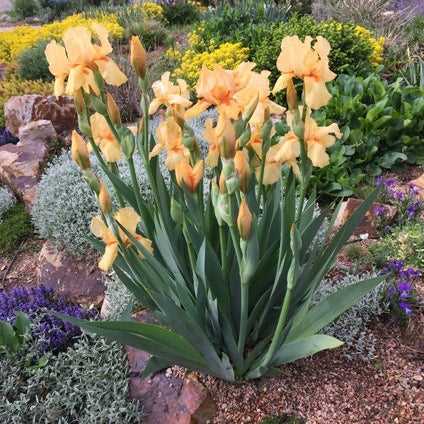
- Find a well-draining location in your garden.
- Remove any weeds or rocks from the area.
- Dig a hole that is wide and deep enough for the iris rhizomes.
- Add organic matter, such as compost, to improve soil fertility.
Planting Irises
- Place the iris rhizomes in the prepared hole, with the pointed end facing up.
- Cover the rhizomes with soil, leaving the tops exposed.
- Water the newly planted irises thoroughly.
Watering and Fertilizing
Irises require regular watering, especially during dry spells. Water deeply, ensuring that the soil is moist but not overly saturated. Apply a balanced fertilizer in early spring and again after blooming to promote healthy growth.
Maintenance and Care
- Divide irises every 3-4 years to prevent overcrowding.
- Remove any dead or diseased foliage regularly.
- Protect irises from pests, such as aphids or iris borers.
- Provide some shade during the hottest part of the day, if necessary.
Enjoying the Blooms
Once irises start blooming, sit back and enjoy their beauty. Cut the flowers for bouquets, but avoid removing more than one-third of the foliage to ensure healthy growth for the following year.
Conclusion
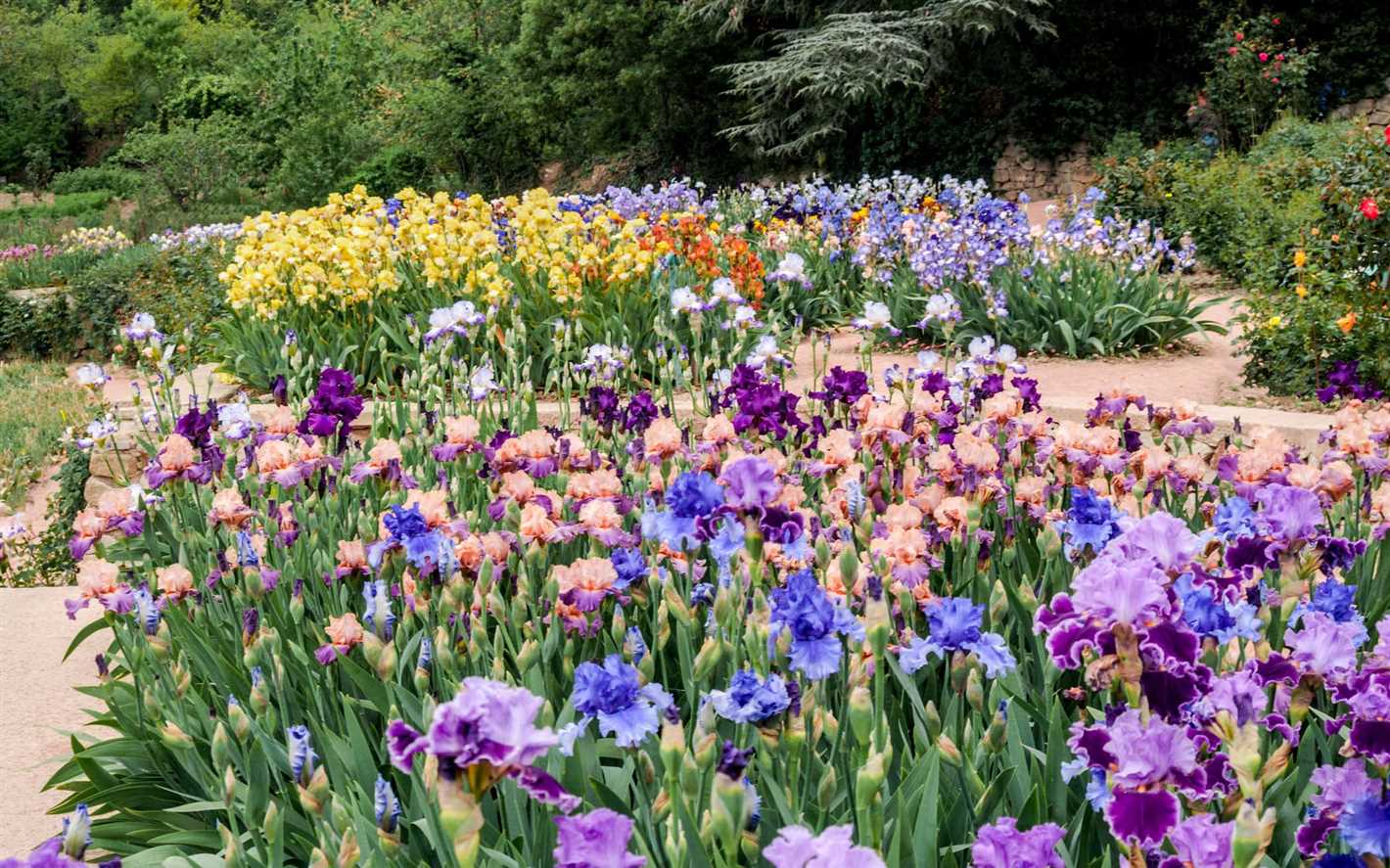
Growing and caring for irises can be a rewarding experience. By selecting the right varieties, preparing the soil properly, and providing the necessary maintenance, you can enjoy a vibrant garden filled with beautiful irises.
Types of Irises
Irises are versatile and diverse flowering plants that belong to the iris family, Iridaceae. With over 200 species and countless hybrids, irises offer a wide range of colors and forms to choose from. Here are some popular types of irises:
1. Bearded Irises
Bearded irises (Iris germanica) are perhaps the most recognizable and widely grown type of iris. They are characterized by their “beard” – a tuft of fine hairs on the lower petals. Bearded irises come in a variety of colors, including purple, white, yellow, and blue.
2. Siberian Irises

Siberian irises (Iris sibirica) are known for their graceful, arching foliage and delicate flowers. They have slender, strap-like leaves and blooms that can range from blue and violet to pink and white. Siberian irises are often used in borders or naturalized in meadows.
3. Japanese Irises
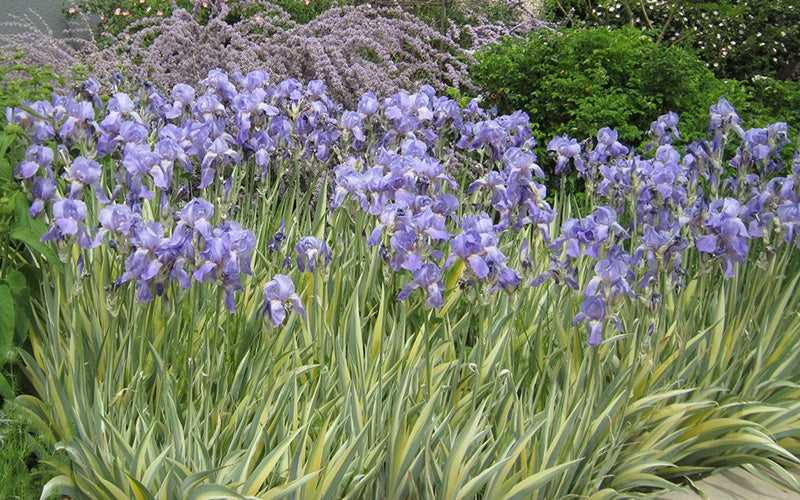
Japanese irises (Iris ensata) are native to wetlands and are prized for their large and showy flowers. They have broad, flat leaves and blooms that come in shades of purple, blue, white, and pink. Japanese irises are often grown near ponds or water gardens.
4. Louisiana Irises
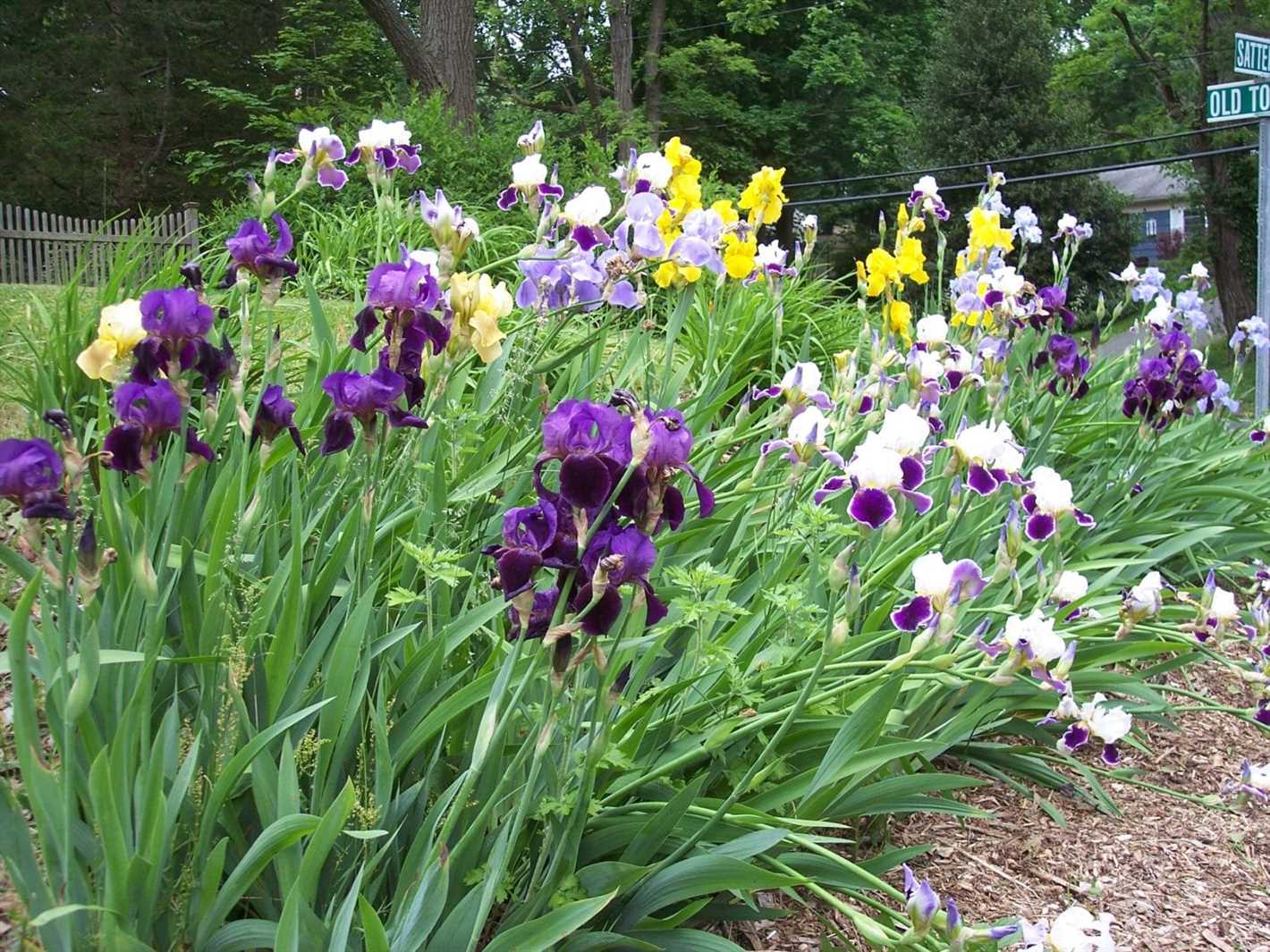
Louisiana irises (Iris hexagona) are native to the southern United States and are well-suited to moist, swampy conditions. They have broad, sword-like leaves and blooms that can be found in a wide range of colors, from deep purple and blue to yellow and white.
5. Dutch Irises
Dutch irises (Iris hollandica) are popular for their bold colors and tall stems. They have narrow, pointed leaves and blooms that come in shades of blue, purple, yellow, and white. Dutch irises are often grown for cut flowers.
6. Reticulated Irises
Reticulated irises (Iris reticulata) are early-blooming irises that are known for their small, delicate flowers. They have narrow, grass-like leaves and blooms that come in shades of violet, blue, and yellow. Reticulated irises are perfect for rock gardens or small containers.
7. Oncocyclus Irises
Oncocyclus irises are a group of irises known for their large, intricately patterned flowers. They are native to the Middle East and have distinctive markings on their petals. Oncocyclus irises require well-drained soil and are often grown by collectors.
These are just a few examples of the many types of irises available to gardeners. Each type has its own unique characteristics and growing requirements, so be sure to choose the ones that are best suited to your garden conditions.
Discovering the Beautiful Variety of Irises
Irises are a diverse group of flowering plants that come in a stunning array of colors and patterns. From delicate pastels to vibrant blues and purples, irises can add a touch of beauty and elegance to any garden.
1. Bearded Irises
One of the most popular types of irises is the bearded iris. These irises feature tall, upright stems with large, showy flowers. The distinctive “beard” on the falls (the lower petals) gives them their name. Bearded irises come in a range of colors, including shades of blue, purple, and yellow.
2. Siberian Irises
Siberian irises are known for their graceful, slender leaves and delicate flowers. These irises are often found in shades of purple and blue, but can also be found in white and yellow. Siberian irises are more tolerant of wet soil than other types of irises, making them an ideal choice for gardens with poor drainage.
3. Japanese Irises
Japanese irises are renowned for their large, bold flowers. These irises have broad, flat petals and come in a variety of colors, including purple, white, and pink. Japanese irises require plenty of moisture and are often planted near water features or in bog gardens.
4. Dutch Irises
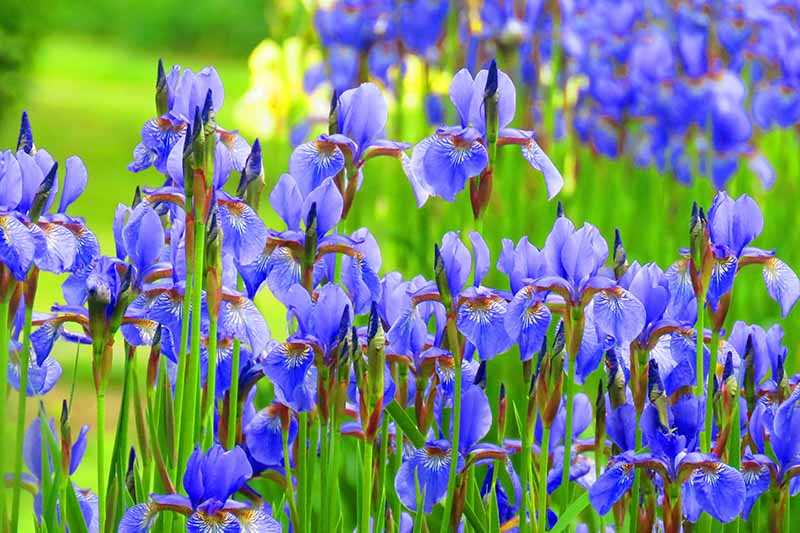
Dutch irises are known for their long, elegant stems and vibrant colors. These irises are commonly found in shades of blue, purple, and yellow. Dutch irises are often used in floral arrangements and can add a pop of color to any bouquet.
5. Species Irises
Species irises are the wild ancestors of modern cultivated iris varieties. These irises come in a wide range of colors and patterns and are often highly fragrant. Species irises are generally more compact than other types of irises and are well-suited for rock gardens or smaller spaces.
6. Rebloomers
Rebloomer irises are a special group of irises that have the ability to bloom more than once per year. These irises can bring color to a garden throughout the growing season, offering continuous beauty and interest. Popular rebloomer irises include some varieties of bearded irises and dwarf irises.
7. Table of Iris Varieties
| Type | Description | Colors |
|---|---|---|
| Bearded Irises | Tall with showy flowers | Blue, purple, yellow |
| Siberian Irises | Graceful leaves, delicate flowers | Purple, blue, white, yellow |
| Japanese Irises | Large flowers, broad petals | Purple, white, pink |
| Dutch Irises | Elegant stems, vibrant colors | Blue, purple, yellow |
| Species Irises | Wild ancestors of cultivated varieties | Various colors and patterns |
| Rebloomer Irises | Bloom more than once per year | Various colors |
With so many different types and varieties to choose from, adding irises to your garden can be a delightful way to create a colorful and diverse landscape.
Choosing the Right Location
When it comes to growing irises in your garden, choosing the right location is crucial for their success. Irises thrive in sunny areas with well-draining soil. Here are some factors to consider when selecting the perfect spot for your irises:
Sunlight
Irises require at least six hours of direct sunlight each day to bloom and grow properly. Therefore, it is important to choose a location that receives full sun for most of the day. Avoid placing your irises in shaded areas, as this can result in weak and spindly growth.
Soil Drainage
Irises prefer well-draining soil to prevent waterlogged roots, which can lead to root rot and other diseases. Avoid planting irises in areas with heavy clay soil or poor drainage. If your soil is heavy and clay-like, consider amending it with organic matter, such as compost or peat moss, to improve drainage.
Soil pH
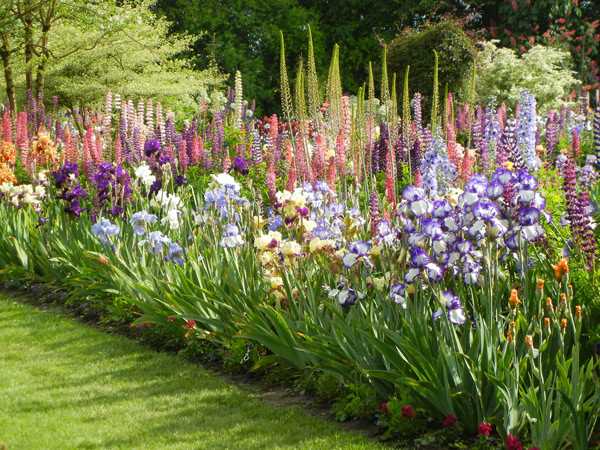
Irises prefer slightly acidic to neutral soil pH levels. Test the pH of your soil using a pH testing kit, and if necessary, adjust the soil pH accordingly. If your soil is too acidic, you can add lime to raise the pH. If it is too alkaline, you can add sulfur or organic matter to lower the pH.
Protection from Strong Winds
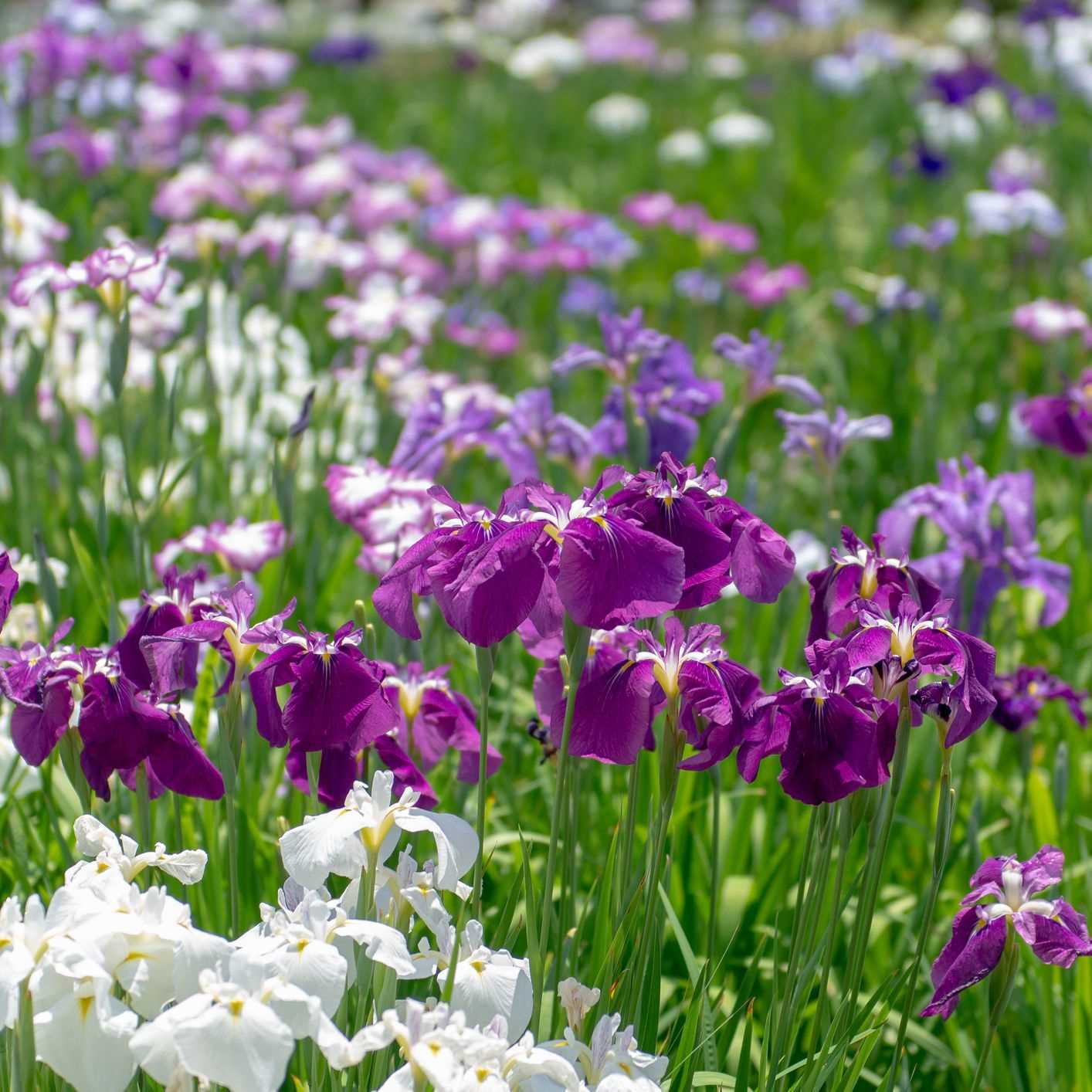
Irises have tall, slender stems that can be easily damaged by strong winds. To protect your irises, choose a location that is sheltered from strong gusts. This can be achieved by planting them near a wall, fence, or other structures that can act as a windbreak.
Spacing
When planting irises, make sure to give them enough space to grow and spread. Most irises require approximately 12 to 18 inches of space between each plant. Proper spacing allows for good air circulation, which helps prevent diseases and promotes healthy growth.
Summary
Choosing the right location for your irises is essential for their overall health and success. Select an area that receives ample sunlight, has well-draining soil, and provides protection from strong winds. Proper spacing and soil pH are also important considerations. By considering these factors, you can create the ideal environment for your irises to thrive.
Finding the Perfect Spot for Your Irises
When it comes to growing and caring for irises, one of the most important factors to consider is finding the perfect spot in your garden. Irises are relatively low-maintenance plants, but they do have specific needs when it comes to sunlight, soil, and drainage.
Sunlight
Irises thrive in full sun, so it’s important to choose a location that receives at least 6 hours of direct sunlight each day. If your garden is shaded or has limited sunlight, consider planting your irises in pots or containers that can be moved into the sunniest areas as needed.
Soil
Irises prefer well-draining soil that is slightly acidic to neutral in pH. Before planting, amend your soil with organic matter such as compost or peat moss to improve drainage and fertility. Avoid heavy clay soils that can become waterlogged and cause rot or other fungal diseases.
Drainage
Good drainage is crucial for the health of your irises. Avoid planting them in areas with standing water or where the soil stays consistently wet. If necessary, create raised beds or mounds of soil to ensure proper drainage. You can also add a layer of gravel or sand to the planting hole to improve drainage.
Spacing
When planting irises, be sure to space them properly to allow for good air circulation. This helps prevent the development of fungal diseases and promotes healthy growth. Space rhizomatous irises (bearded irises) about 1 to 2 feet apart, while bulbous irises (Dutch irises) should be spaced 4 to 6 inches apart.
Companion Plants
Consider planting your irises alongside other plants that have similar sunlight and soil requirements. Good companion plants for irises include daylilies, peonies, and roses. These plants not only provide a beautiful contrast in color and texture but can also help shade the soil and prevent weed growth.
By choosing the perfect spot for your irises and providing them with the right conditions, you can enjoy a stunning display of colorful blooms year after year. Follow these guidelines for sunlight, soil, drainage, spacing, and companion planting to ensure the health and beauty of your iris garden.
Preparing the Soil
Before planting irises in your garden, it is important to prepare the soil properly. This will ensure that they have the necessary nutrients and drainage to thrive.
Soil Testing
Start by testing the pH of your soil. Irises prefer slightly acidic to neutral soil, with a pH between 6.0 and 7.0. You can purchase a soil testing kit from your local garden center or send a sample to a laboratory for analysis. The results will help you determine if any adjustments need to be made to the soil.
Amending the Soil
If the pH needs to be adjusted, you can add lime to raise the pH or sulfur to lower it. Follow the recommended application rates based on the results of your soil test.
In addition to adjusting the pH, it is important to improve the soil’s texture and fertility. Irises prefer well-draining soil that is rich in organic matter. To achieve this, you can add compost, well-rotted manure, or peat moss to the soil. Work these amendments into the top 6-8 inches of soil using a garden fork or tiller.
Removing Weeds
Before planting irises, it is important to remove any existing weeds or grass from the area. These can compete with the irises for nutrients and water. Use a garden hoe or hand tools to carefully remove the weeds, being careful not to disturb the soil too much.
Creating Raised Beds
If your soil has poor drainage, consider creating raised beds for your irises. This will help prevent waterlogging and root rot. To create a raised bed, mound up soil in a rectangular shape and compact it slightly. The raised bed should be around 6-8 inches tall and the width can vary depending on the number of irises you plan to plant.
Conclusion
By properly preparing the soil before planting your irises, you are giving them the best chance for success. Take the time to test the pH, amend the soil as needed, remove weeds, and consider creating raised beds if necessary. These steps will help ensure that your irises thrive and reward you with beautiful blooms.
Creating the Ideal Growing Environment for Irises
Growing irises successfully requires creating the ideal environment for these beautiful flowers. By providing the right conditions, you can ensure that your irises thrive and produce stunning blooms year after year.
1. Sunlight
Irises require a good amount of sunlight to flourish. Plant them in a location where they will receive at least 6 hours of direct sunlight per day. Avoid planting them in shaded areas or under dense trees, as lack of sunlight can result in weak and spindly growth.
2. Soil
Irises prefer well-draining soil that is rich in organic matter. Prepare the soil by adding compost or well-rotted manure before planting. This will provide the necessary nutrients and improve the soil structure. Avoid heavy clay soils, as they can lead to poor drainage and cause root rot.
3. Watering
While irises are relatively drought-tolerant once established, they still require consistent moisture during their growing season. Water them deeply once a week, providing enough water to saturate the root zone. Avoid overwatering, as this can lead to root rot. Allow the soil to dry out slightly between waterings.
4. Fertilization
Irises benefit from a balanced fertilizer applied in early spring, before the plants start actively growing. Use a slow-release granular fertilizer or a liquid fertilizer diluted to half strength. Avoid over-fertilizing, as this can result in excessive foliage growth and reduced flowering.
5. Mulching
Mulching helps to conserve moisture, suppress weeds, and regulate soil temperature. Apply a layer of organic mulch around the base of the iris plants, taking care to keep the mulch away from the rhizomes. This will help protect the rhizomes from rotting and maintain a more stable soil temperature.
6. Pest and Disease Control
Keep an eye out for pests such as aphids, iris borers, and slugs. Regularly inspect the plants and use organic pest control methods if necessary. Prevent diseases like iris leaf spot and iris rust by providing good air circulation, avoiding overhead watering, and removing infected leaves or plants.
7. Division and Transplanting
Irises benefit from division every 3-4 years to prevent overcrowding and rejuvenate the plants. Late summer or early fall is the best time to divide and transplant irises. Dig up the rhizomes, discard any damaged or diseased ones, and replant the healthy divisions in a new location with amended soil.
By following these tips and providing the ideal growing environment, you can enjoy the beauty of irises in your garden for many years to come.
Planting and Transplanting Irises
Irises are beautiful flowers that add color and elegance to any garden. Whether you are planting new irises or transplanting existing ones, it is important to follow the proper techniques to ensure their success.
Planting New Irises
- Choose a sunny, well-drained spot in your garden for planting the irises.
- Prepare the soil by removing any weeds or grass and loosening it with a garden fork or tiller.
- Dig a hole that is wide and deep enough to accommodate the iris rhizome, which is the thick, fleshy root of the plant.
- Place the iris rhizome in the hole, making sure that the top is level with the soil surface.
- Backfill the hole with soil, gently firming it around the rhizome.
- Water the newly planted iris thoroughly to settle the soil and provide moisture.
- Apply a layer of mulch around the iris to help retain moisture and control weeds.
Transplanting Existing Irises
If you need to transplant irises to a new location, it is best to do so in late summer or early fall.
- Start by preparing the new planting site, following the steps outlined above for planting new irises.
- Dig around the existing iris clump, carefully lifting it out of the ground.
- Divide the iris clump into smaller sections, making sure that each section has a healthy rhizome and several leaves.
- Trim the leaves of each section to about one-third of their original length to reduce water loss during transplanting.
- Plant each iris section in the prepared hole, following the planting instructions mentioned earlier.
- Water the transplanted irises well and continue to provide regular care and maintenance.
By following these planting and transplanting techniques, you can enjoy the beauty of irises in your garden for years to come.
Tips for Successfully Planting and Transplanting Irises
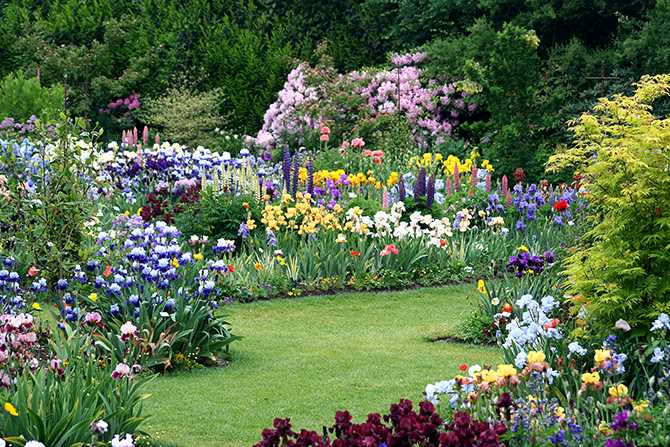
Irises are beautiful flowers that can add color and elegance to any garden. Whether you’re planting irises for the first time or transplanting existing ones, following these tips can help ensure their successful growth and blooming.
- Choose the Right Location: Irises prefer full sun but can tolerate partial shade. Select a location with well-draining soil to prevent waterlogging, as excessive moisture can lead to rotting of the rhizomes.
- Prepare the Soil: Before planting or transplanting irises, prepare the soil by removing weeds, rocks, and other debris. Loosen the soil with a garden fork or tiller to improve aeration and drainage. It’s also a good idea to amend the soil with organic matter, such as compost, to enhance its fertility.
- Plant at the Right Time: Irises can be planted in either spring or late summer/early fall. Spring planting allows them to establish roots before the hot summer months, while fall planting gives them a head start for the next growing season.
- Plant at the Right Depth: When planting or transplanting irises, make sure to place the rhizomes (the thickened stems from which the roots grow) just below the soil surface. The top of the rhizome should be exposed to the air, while the roots should be spread out and covered with soil.
- Space Them Out: Plant irises at least 12-18 inches apart to allow for proper air circulation and prevent overcrowding. This spacing also helps reduce the risk of disease and pest infestation.
- Water Consistently: While irises are relatively drought-tolerant, they still require regular watering, especially during dry spells. Water deeply but infrequently to promote deep root growth and avoid waterlogged conditions.
- Fertilize Regularly: Feed your irises with a balanced fertilizer, such as a 10-10-10 or 14-14-14 formula, in early spring and after blooming. Follow the package instructions for application rates and methods.
- Divide and Transplant as Needed: Over time, irises can become overcrowded, resulting in reduced blooming. Divide and transplant the rhizomes every 3-4 years to maintain their vitality. This can be done in late summer or early fall, after the blooming season.
By following these tips, you can ensure the successful planting and transplanting of irises in your garden. With their vibrant colors and elegant blooms, irises are sure to be a stunning addition to your outdoor space.
Watering and Fertilizing Irises
Proper watering and fertilizing is essential for the health and success of your irises. Follow these guidelines to ensure your irises thrive:
Watering
- Irises prefer well-draining soil, so make sure the area where you plant them has good drainage.
- Water your irises deeply once a week during the growing season, providing about 1 inch of water.
- Monitor the soil moisture level and adjust the watering schedule accordingly. Irises need moist soil but should not be waterlogged.
- During hot and dry periods, you may need to water more frequently to keep the soil adequately moist.
Fertilizing
- Use a balanced fertilizer, such as a 10-10-10 or 5-10-5 formula, in early spring when new growth appears.
- Apply the fertilizer at a rate of 1 tablespoon per square foot of planting area.
- Sprinkle the fertilizer evenly around the irises, keeping it at least 6 inches away from the base of the plants.
- Water the irises after fertilizing to help the nutrients reach the roots.
- Reapply the fertilizer every six weeks throughout the growing season, following the same application rate and method.
By providing adequate water and nutrients, your irises will have the best chance to grow and produce beautiful blooms. Remember to monitor the soil moisture and adjust the watering schedule as needed, and fertilize regularly to ensure healthy growth.
Question-answer:
What are irises?
Irises are flowering plants with showy flowers that come in a variety of colors. They are commonly grown in gardens for their beauty and elegance.
How do I grow irises?
Growing irises is relatively easy. They prefer well-drained soil and full sun to partial shade. Plant the rhizomes about a foot apart and just below the surface of the soil. Water them regularly, but avoid overwatering. Fertilize them once a year in early spring. Trim off the dead leaves in late fall or early winter.
What are the different types of irises?
There are several different types of irises, including bearded irises, Siberian irises, Japanese irises, and Dutch irises. Each type has its own unique characteristics and growth requirements.
When is the best time to plant irises?
The best time to plant irises is in late summer or early fall. This gives the rhizomes enough time to establish roots before winter. However, they can also be planted in the spring, as long as you provide them with enough water until they are established.
How do I care for irises?
To care for irises, you should water them regularly, but avoid overwatering. Fertilize them once a year in early spring. Remove the dead leaves in late fall or early winter. Divide and replant the rhizomes every few years to prevent overcrowding. Additionally, be sure to remove any weeds or pests that may affect the plants.







